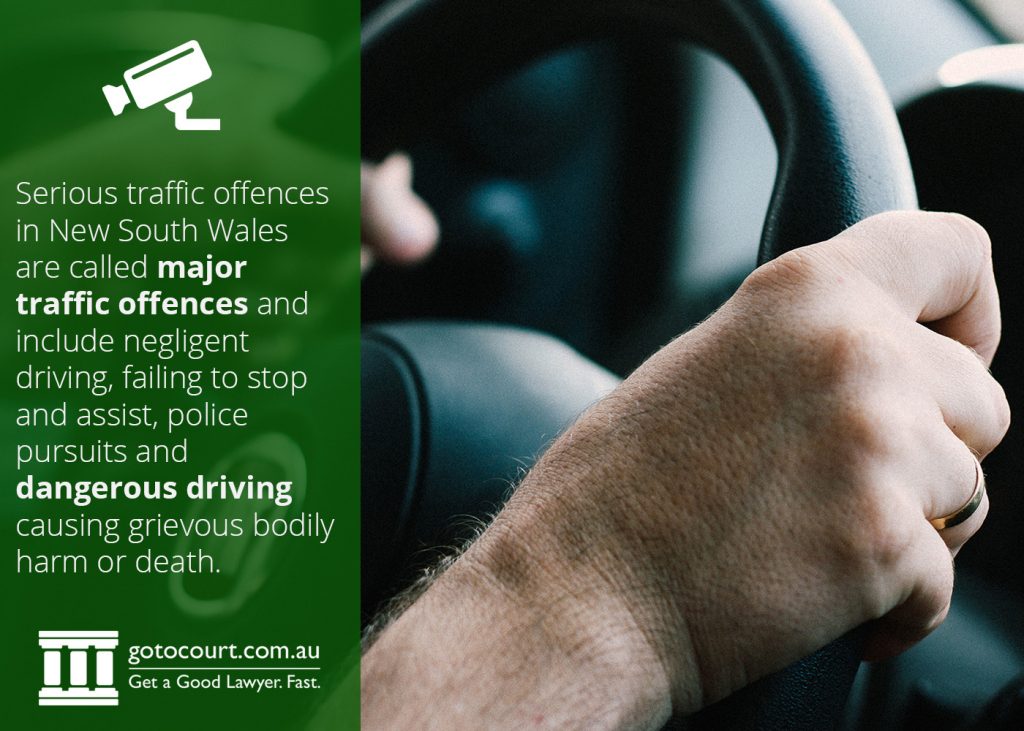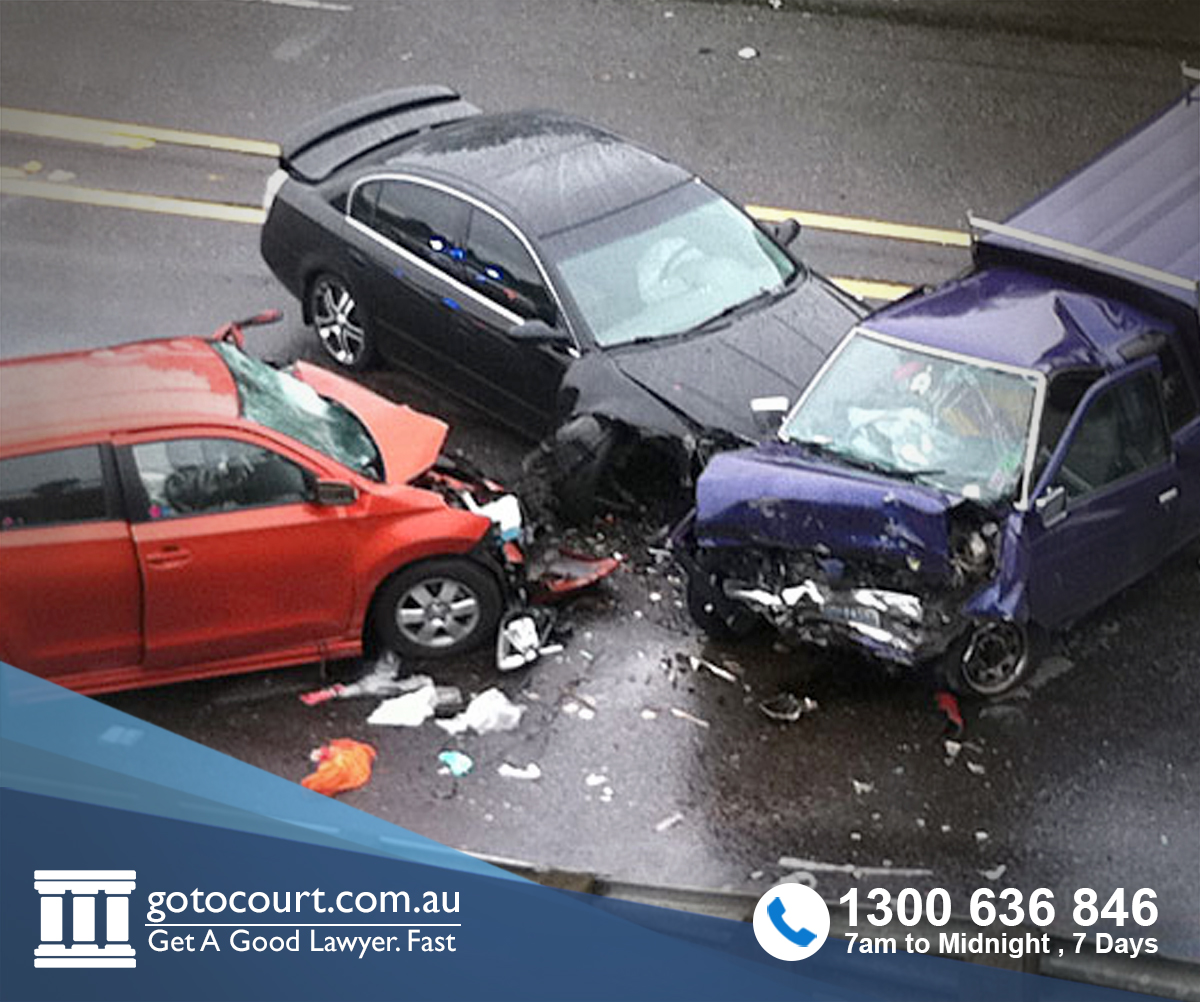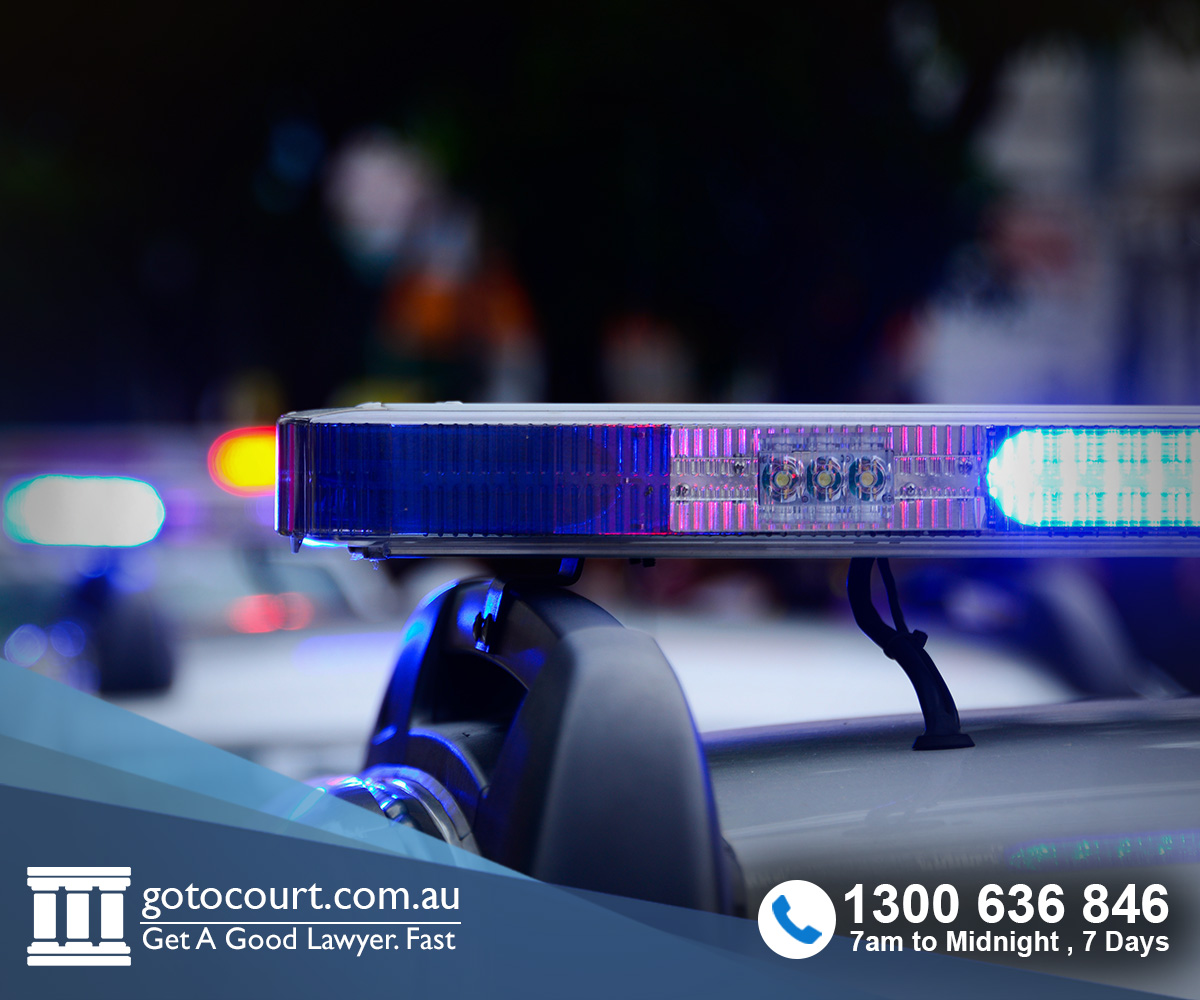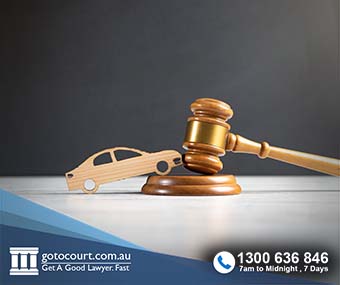Serious Traffic Offences in New South Wales
Serious traffic offences in New South Wales are known as major offences. Both the Crimes Act 1900 and the Road Transport Act 2013 deal with serious traffic offences in NSW. A major traffic offence is defined under section 4 of the Road Transport Act 2013. A driver who commits three such offences in a five year period would once have automatically been designated an Habitual Traffic Offender but this was abolished in late 2017.
Serious Traffic Offences in NSW include:
- Predatory driving;
- Police pursuits;
- Dangerous driving;
- Failing to stop and assist;
- Negligent driving causing death or grievous bodily harm;
- Furious or reckless driving;
- Menacing driving; and
- Driving offences causing death or grievous bodily harm which are prosecuted under any other sections of the Crimes Act 1900.
This article looks at these serious traffic offences in NSW in detail.
Predatory driving as a serious traffic offence in New South Wales
Predatory driving in NSW is when the driver of a vehicle pursues another vehicle in order to cause an impact between the two vehicles. The driver must intend to cause a person in the other vehicle physical harm.
Predatory driving occurs even if there is only the threat of a collision between the two vehicles but they do not actually collide. The maximum penalty for this offence is five years’ imprisonment.
Police pursuits
This type of major traffic offence occurs when the driver of a vehicle knows or should reasonably suspect that police officers are pursuing their vehicle and require the driver to pull over. The offence is committed when the driver does not stop or drives in the following way:
- Recklessly;
- At a speed dangerous to others; or
- In a manner dangerous to others.
This offence does not require any collision or harm caused to anyone. The offence is failing to stop when required to by police.
The maximum penalty for a police pursuit is three years’ imprisonment for a first time offence and imprisonment for up to five years for any additional offences.
Dangerous driving in New South Wales
Dangerous driving causing death
Dangerous driving causing death is when a person driving a vehicle is involved in an impact that caused the death of another person whilst the driver was either:
- Under the influence of alcohol or drugs;
- Driving at a dangerous speed; or
- Driving in a dangerous manner.
A dangerous driving causing death charge is a serious offence which carries a maximum penalty of up to 10 years’ in prison.
Aggravated dangerous driving causing death
This serious traffic offence in NSW has similar elements to a charge of dangerous driving causing death, but is committed in circumstances of aggravation.
Circumstances of aggravation include any of the following:
- Being over the legal limit of alcohol;
- Driving at 45km or more over the speed limit;
- Being involved in a police pursuit; or
- Being significantly affected by drugs.
The penalty for this serious driving offence is higher than for dangerous driving causing death. The maximum penalty is 14 years’ imprisonment.
Dangerous driving causing grievous bodily harm
Dangerous driving causing grievous bodily harm is when a person driving a vehicle is involved in an impact that caused grievous bodily harm to another person whilst the driver was either:
- Under the influence of alcohol or drugs;
- Driving at a dangerous speed; or
- Driving in a dangerous manner.
Under the Crimes Act 1900, grievous bodily harm means permanent and serious disfigurement. Grievous bodily harm is essentially serious harm caused to another person, including an unborn child.
The maximum penalty for a charge of dangerous driving causing grievous bodily harm is seven years’ imprisonment.
Aggravated dangerous driving occasioning grievous bodily harm
This major traffic offence has the same elements as a charge of dangerous driving causing grievous bodily harm, but is committed in circumstances of aggravation.
Circumstances of aggravation includes any of the following:
- Being over the legal limit of alcohol;
- Driving at 45km or more over the speed limit;
- Being involved in a police pursuit; or
- Being significantly affected by drugs.
The penalty for this serious driving offence is higher than a charge of dangerous driving causing grievous bodily harm. The maximum penalty for aggravated dangerous driving occasioning grievous bodily harm is 11 years’ imprisonment.
Defences to a dangerous driving charge in New South Wales
It is a defence to any dangerous driving charge in NSW if the driver can prove that the crash was not caused by any of the following:
- Being under the influence of alcohol or drugs;
- Driving at a dangerous speed; or
- Driving in a dangerous manner.
It is the responsibility of the person charged with the offence to prove that these factors did not cause the crash.
Failing to stop and assist after an accident in New South Wales
It is a serious traffic offence in NSW under both the Crimes Act 1900 and the Road Transport Act 2013 to fail to stop and assist after a car accident that caused injury, including death.
The penalties for these offences differ between the Crimes Act 1900 and the Road Transport Act 2013. Under the Crimes Act 1900 failure to stop and assist after a vehicle impact causing death attracts a maximum penalty of 10 years’ imprisonment. While a conviction of failing to stop and assist after an impact causing grievous bodily harm is seven years in prison.
Under the Road Transport Act 2013 the maximum penalty is a fine of up to 30 penalty units ($3,300 at the time of writing) and / or an 18-month prison term for a first offence of failure to stop and assist after an accident. For additional offences, offenders face a fine of up to 50 penalty units ($5,500 at the time of writing) and / or two years in prison.
Failing to stop and assist after vehicle impact causing death
The offence of failing to stop and assist after a vehicular impact causing death is committed when a person driving a vehicle is involved in an impact. The impact must have caused the death of another person and the offender does not stop to assist.
To be guilty of this offence, the driver must know or should reasonably know that they have been involved in an accident that has caused grievous bodily harm or the death of another person. Despite this knowledge they fail to stop and help.
Failing to stop and assist after vehicle impact causing grievous bodily harm
This offence is when a person driving a vehicle is involved in an impact which caused grievous bodily harm to another person and does not stop to assist.
To be guilty of this offence, the elements are the same as the offence of failing to stop and assist after vehicle impact causing death. The key difference is the other person has not died but has suffered grievous bodily harm.
Negligent driving
The Road Transport Act 2013 deals with negligent driving. It prohibits driving a vehicle negligently on a road. Additional penalties apply if the negligent driving causes death or grievous bodily harm.
The difference between negligent driving and dangerous driving is that a person can drive negligently without being under the influence of alcohol or drugs, or speeding. For example, a driver may be speaking or texting on a mobile phone which causes them to drive negligently.
Penalties for negligent driving range from a fine of up to 10 penalty units ($1,100 at the time of writing) where neither death or grievous bodily harm was caused up to the following:
- If a death occurred as a result of a first offence, a fine of up to 30 penalty points ($3,300) and / or imprisonment for up to 18 months;
- For an additional offence when a death has occurred, a fine of up to 50 penalty points ($5,500) and / or imprisonment for two years;
- If grievous bodily harm was caused as a result of a first offence, a fine of up to 20 penalty points ($2,200) and / or nine months’ in prison; and
- For an additional offence where the negligent driving caused grievous bodily harm, a fine of up to 30 penalty units ($3,300) and imprisonment for 12 months.
Furious or reckless driving
The Road Transport Act 2013 deals with furious and reckless driving. It is illegal to drive a vehicle on a road in the following ways:
- Furiously;
- Recklessly;
- At a dangerous speed; or
- In a dangerous manner.
However, the court must consider the following factors in deciding whether a person is guilty of furious or reckless driving:
- The nature, use and condition of the road;
- The amount of traffic present; and
- Any hazards on the road.
Penalties for furious or reckless driving are dependent on whether this is a first time offence. The maximum penalties for this serious traffic offence include the following:
- For a first offence, a fine of up to 20 penalty units ($2,200 at the time of writing) and / or nine months’ imprisonment;
- For an additional offence, a fine of up to 30 penalty units ($3,300 at the time of writing) and / or 12 months’ in prison.
Menacing driving
Menacing driving is a serious traffic offence under the Road Transport Act 2013. A driver must not drive a vehicle with the intent to threaten another person or in a way that could appear threatening.
Menacing driving can be towards a person or property and does not have to occur on a road. Penalties are dependent on whether the driver had intent to menace or the behaviour had the possibility of menace. The maximum penalties include the following:
- For a charge of intent to menace:
- For a first time offence, a maximum fine of up to 30 penalty units ($3,300 at the time of writing) and / or 18 months’ imprisonment;
- For an additional offence, a maximum fine of up to 50 penalty units ($5,500) and / or two years in prison;
- For a charge of the possibility of menace:
- For a first time offence, a maximum fine of up to 20 penalty units ($2,200 at the time of writing) and / or 12 months’ imprisonment; and
- For an additional offence, a maximum fine of 30 penalty units ($3,300) and / or 18 months in prison.
Defence to a menacing driving charge
It is a defence to a menacing driving charge if the accused can prove that under the circumstances they could not reasonably avoid menacing the other person.
Driving offences causing death or grievous bodily harm
A major traffic offence is committed if a person uses a vehicle to cause the death or grievous bodily harm to another and is prosecuted under any of the following offences under the Crimes Act 1900:
- Murder;
- Manslaughter;
- Grievous bodily harm (reckless or with intent);
- Injuries caused by furious driving; or
- Any other offence under the Crimes Act 1900.
These charges are relatively rare in serious traffic offence cases and would only happen in very serious or deliberate driving incidents. The maximum penalties for these types of serious traffic offences in NSW range from two years to life in prison.
Licence disqualification
Licence disqualifications are dealt with in Part 7.4 Division 1 of the Road Transport Act 2013. For all serious traffic offences in NSW, an automatic disqualification period applies.
Automatic licence disqualification means that you are disqualified from driving automatically, without a specific order by the court at the time of conviction. Periods of licence disqualification vary for each of the various different major traffic offences.
In some cases, a NSW court may have discretion to increase or decrease the period of automatic licence disqualification.







